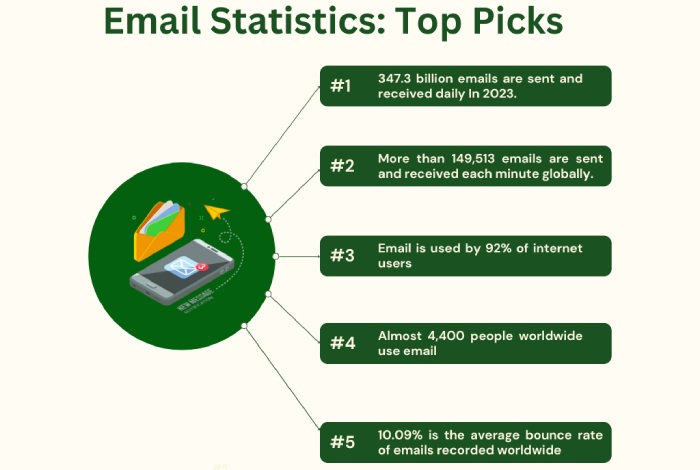Not Receiving DMARC Aggregate and Forensic Reports? Here’s Why
Did you know that there’s more to DMARC implementation than just the policies that determine what happens to emails that don’t pass authentication checks (SPF and DKIM)? It is the reporting feature of DMARC that sets the tone for the overall effectiveness of your email security strategy. DMARC reports offer comprehensive insights into how emails claiming to come from your domain are being handled by their recipients and the ones that fail DMARC, SPF, or DKIM validation, providing a clear view of both legitimate and fraudulent activities.
In an ideal situation, as soon as you publish the DMARC record on your DNS, you start receiving these reports in your inbox. It’s the best-case scenario we are talking about, and it assumes that all technical and operational settings are perfectly aligned. But is it always the case?
There are times when aggregate/forensic reports do not land in the mailbox that they’re supposed to. Why is that so, you ask? Well, there are multiple reasons for this. Let’s take a look at some of the major factors that might be causing this issue.
Factors that Might Impact Aggregate and Forensic Report Delivery
Let’s face it: configuring DMARC is a complex and tricky endeavor (which is why we ask you not to DIY it). Even a small misstep might lead to significant disruptions, such as not receiving aggregate or forensic DMARC reports.
Let us decode the reasons why DMARC report delivery might be compromised. Bear in mind that understanding these loopholes will not only help you in troubleshooting but also enhance your overall email security strategy.
Errors in DMARC Record Configuration
One of the major roadblocks in aggregate and forensic report delivery is errors in DMARC record configuration. But what do these errors look like? In most cases it is the “rua” and “ruf” tags that are misconfigured, leading to significant issues with report delivery.
In case you didn’t know, the “rua” tag is the one that specifies the email address designated to receive DMARC aggregate feedback reports. And the “ruf” tag specifies the destination for forensic reports. So, if these tags include typos or any other syntax errors, it is a no-brainer that the reports will not reach the intended recipients.
More than One DMARC Record Published on the Domain
Are you tempted to publish multiple DMARC records on your domain, thinking that it might offer extra layers of security or better customization for different sources of email? Well, in this case, less is more. Or better yet, one is enough!
The reason behind this is that multiple DMARC records throw off the email servers, leaving them confused about which policy to enforce and which reports to generate. Not only does this reduce the effectiveness of the DMARC protocol in combating fraud and improving email security, but it also complicates the management and monitoring of your email authentication landscape.
Incomplete External Domain Verification Setup (EDV)
Before you ask, EDV or External Domain Verification is a critical aspect of ensuring email security as it confirms that the domains sending emails are authenticated and verified. So, what happens when this setup is incomplete or improperly configured?
If external domains are not correctly verified, the reports might contain inaccuracies, or even worse; you might not receive the aggregate and forensic reports at all.
For instance, if analysis.com does not authorize domain.com by setting up the necessary EDV DNS record (analysis.com._report._dmarc.reporting.com with the value v=DMARC1), email service providers will not send aggregate or forensic reports to the specified email address.
Misconfigured Specified Mailboxes
Sometimes, the problem might not be in your DMARC record but in your mailbox. If the specified mailboxes that are intended to receive the DMARC aggregate and forensic reports are not correctly configured, you may face challenges in actually getting the reports. For instance, if your mailbox does not accept files with XML/zip/Gzip attachments, the aggregate/ forensic reports will never reach your inbox.
Moreover, a specific setting in your mailbox could also be blocking the incoming reports, so make sure to change it.
Your ESP Does Not Support Forensic Reports
Did you know that not all email service providers (ESPs) send forensic reports? While all ESPs support aggregate reports, this is not the case for forensic reports. Chances are, you are using one of these ESPs for your email communications, which is why you’re missing out on critical information on specific details of individual email failures. The only way to fix this issue is to upgrade your ESP and choose the one that prioritizes comprehensive email security.
No Email Sending Activity
This one needs no explanation! If your domain is inactive and you are not sending emails from it, you won’t receive any DMARC report. In fact, in some cases, low email volume can also become a reason for not receiving aggregate or forensic reports.
But what if neither of the cases applies to you? That means there are a significant number of outgoing emails from your domain. In that case, all you have to do is wait a couple of days to receive the reports. Typically, ESPs send DMARC aggregate reports every day, but it is normal for them to take 1-2 days to send your first aggregate report.
It goes without saying that with accurate and timely reports, pinpointing and addressing vulnerabilities in your email authentication setup becomes very easy. But how do you deal with the complexities that come with it? Don’t let the challenges of email authentication hold you back!
You can rely on the DMARC report analyzer open source, which specializes in receiving, storing, and analyzing reports. At DuoCircle, we can help you process aggregated & forensic reports at no extra cost while ensuring GDPR compliance.
Want to learn how our services can help you streamline the Sisyphean task of DMARC Reporting? Book a demo with us today and discover how DuoCircle can transform your approach to email security.


